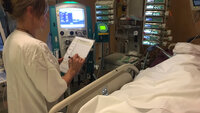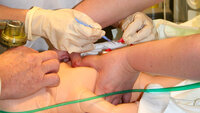2921 hit for Student
Home health care services in collaboration with the specialist health care services
Different perspectives on what to prioritise, characterise the cooperation.
Translation and psychometric testing of the Family Collaboration Scale
The instrument measures the collaboration between healthcare personnel and the relatives of frail elderly patients in acute hospital wards. Having a Norwegian version of the instrument will mean it can be used in our clinical practice and research.
The CPOT – a tool for pain assessment for intensive care patients
Intensive care patients often suffer from undertreated pain. A pain assessment tool in a Norwegian version may increase the quality of patient treatment.
Simulation-based team training in paediatric units
Simulation-based team training improves quality of patient care, but the training should be a planned activity.
Co-ordinated collaborative meetings as patients transition from the psychogeriatric health service
Collaborative interdisciplinary meetings may increase the mutual respect between health professionals and provide more knowledge about the patient.
The registered nurse in the field of substance abuse – invisible and generic or distinct and specific?
Healthcare personnel in interdisciplinary teams believed that registered nurses made a distinct and recognised contribution to the collaborative effort. In particular, they valued the registered nurses’ somatic knowledge and their milieu therapy expertise.
Perceptions of postnatal care after emergency caesarean sections
Women who had given birth by caesarean section often downplayed their own complaints, felt left to their own devices and received invaluable assistance from their partner.
The organisation of community nursing services may impact negatively on safety and the quality of care
Some municipalities gave considerably more prominence to finances and day-to-day operations than safe and secure patient experiences.













